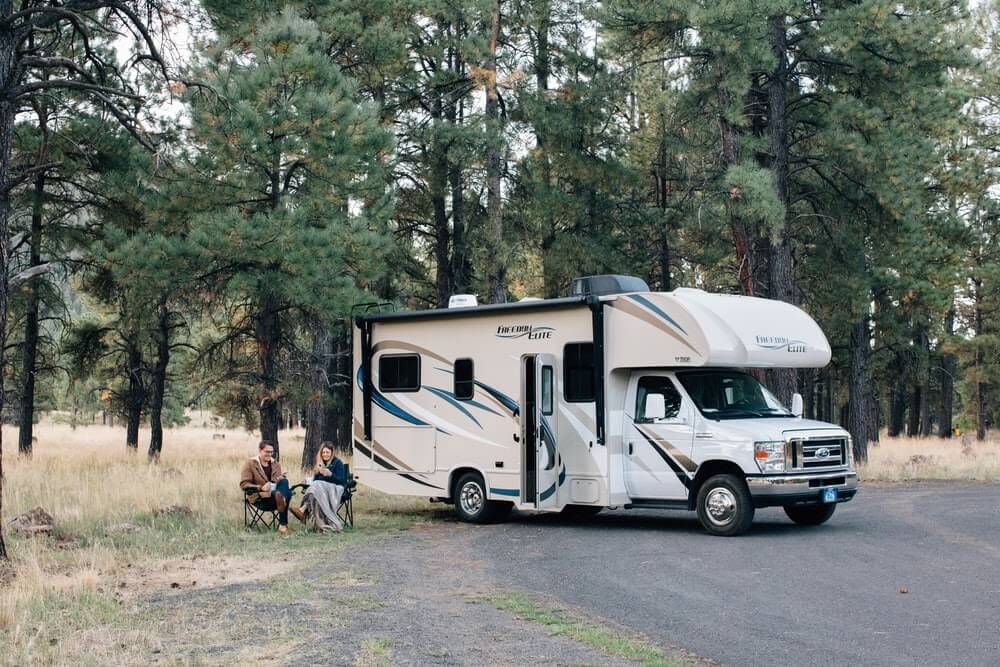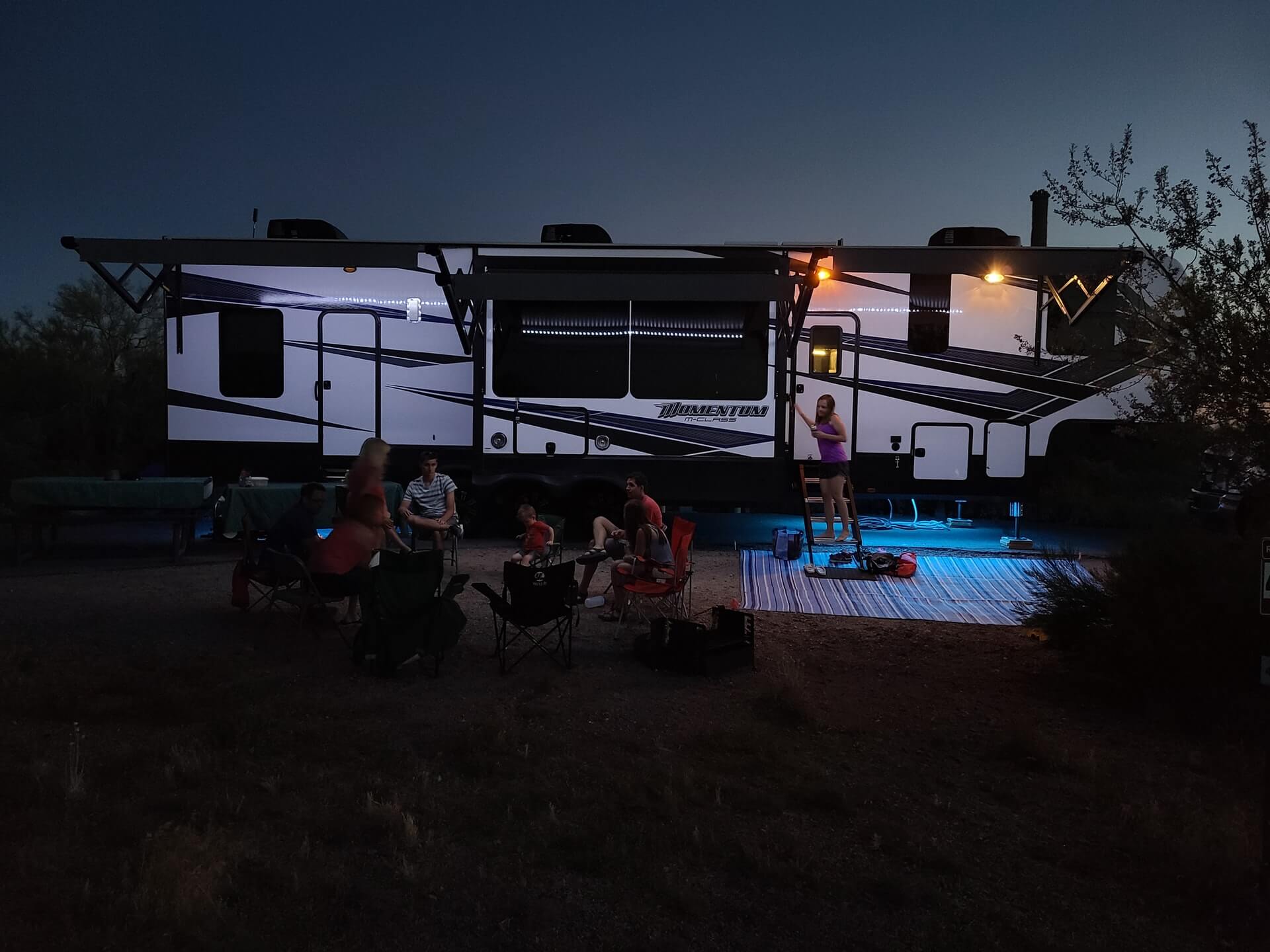RV Water Mysteries Explained: What It Is and Where It Goes

Whether your destination takes you north to Canada or to our Woodland Creek RV Park with full hookups in Tyler, Texas, one of the best ways to create an uproar is to make mistakes handling the water systems in your RV. There’s nothing like fumbling with your sewer hose while stuffing it into a trash bag to get your neighbors attention. Did you have any idea how nasty it would be when you’d finished using it?
So let’s review some water basics:
Freshwater
You’re going to drink this. Learn how to keep this tank clean to flow freely through the four seasons.
Greywater
Greywater is wastewater from your kitchen or bathroom sink or your shower. It goes into the greywater tank and will contain soap, detergent, and anything else you put down those drains.
Blackwater
Putting it delicately, this is the nasty stuff. It contains urine, feces, toilet paper, and anything else you put down the drain. Anything solid will jam your valves and leave you with an awful clean-up job.
Note: This is probably a good place for the toilet paper discussion. Opinions range from “just do what you do at home” to “don’t put any paper at all down the chute.”
RV stores want to sell you special paper at higher prices, which may not be necessary. (It’s a matter of experience and personal opinion.) It’s probably best to develop some new habits:
- Use thin toilet paper.
- Use plenty of water when flushing.
- Do not leave your blackwater valve open to the sewer system while camping. Let the tank fill up with toilet water and human waste to avoid the dreaded “poop pyramid.”
Now that you understand that there are three kinds of water in most RVs, let’s think about what you need to know to avoid disasters and what tools will help you manage your systems.
Managing Your RV Water Tanks
- At the RV park, when you hook your sewer hose to the park’s sewer system, never leave the black tank’s outlet open. Keep it closed so a “soup” of human waste, water, and toilet paper can accumulate in the black tank. That way, when it’s full or when you’re ready to leave, the whole soupy mess will run out. Otherwise, you’re in danger of building a “poop pyramid” beneath the toilet in your tank. Getting that out after it’s solidified is a job you don’t want to undertake.
- A properly equipped RV can accumulate your greywater and run it into your black tank to help flush it. If not, there are several ways to flush and clean the black tank. Learn the different techniques to keep your gauge working and avoid accumulating solid waste that will eventually dry and clog your system.
Why Use Greywater?
You’ll be stunned at how much water you put into this tank, especially if you have people in your group who are addicted to long showers or you haven’t yet learned how to wash dishes in a water-saving way.
- If you’re not saving your greywater to help clean your black tank, open your greywater valve to let greywater run into the RV park’s sewer system. Do not let your greywater run out onto the ground.
- Check your gauges at least once a day to make sure you know how full your tanks are and whether your gauges are working.
Surprisingly, some people are unaware that they have a freshwater tank because they always go to RV parks with water connections. In these cases, it is common to find some scary stuff growing in it. Check your freshwater tank and keep it clean, even if you think you don’t need the water in it.
Just imagine: You’re driving on the Interstate and pull over for a rest. Want some coffee? What’s the water source? Even if you’re one of those people who spend your hard-earned money on bottled tap water, what will you use to wash your face and hands?
- Flush your black- and greywater tanks before you put your RV back into storage. Again, you don’t want that stuff to dry.

Helpful Tools
- Gauges. These show you how full your fresh-, grey-, and blackwater tanks are – but! Most will only give you a rough estimate. Don’t wait until you’re standing in gray, soapy water in the shower. Flushing your tanks each time you dump will make a huge difference.
- Fresh water hoses. Most people buy white hoses and don’t use them for anything else. You may want to bring an extra hose in case the water spigot is farther away from your RV’s faucet than you expected.
- Pressure regulators. Because RV park water pressure can range from poor to extremely high, many people protect their RV pipes by putting a pressure regulator between the RV park faucet and the freshwater hose. They are expensive and often left behind when folks are sleepily disconnecting their systems early in the morning. Be careful!
- Sewer hoses and connectors. Many RVs use the three-inch “stinky slinky.” In addition to the slinky, you’ll need a “bayonet elbow fitting” – that angled thing at the end of the hose, and a donut adapter, required by most RV parks to seal your hose to the park’s in-ground pipe.
You’ll also want to buy a set of sewer hose supports because many parks have sewer pipes that stick up to a foot out of the ground. And last, you may want an extra length of hose – there’s always those occasions where your campsite is a long way away from your blackwater tank outlet. If your RV has the Sanicon system, learn how that system works before you head out on the road.
- Chemicals. Many types, both commercial and homemade, are designed to deodorize, break down waste, and clean the tank, but they can’t do everything. Talk to other RV owners and RV park owners to learn which will work best for you.
Live and Learn About RV Water and Other Mysteries
Traveling and camping in your RV can be a wonderful experience, but it can also be confusing.
Your fellow campers, along with our Woodland Creek RV Park, are your best resources for proper preparation to ensure your vacation is not all wet. We fully furnish our park for your enjoyment. Don’t be afraid to ask for help.
